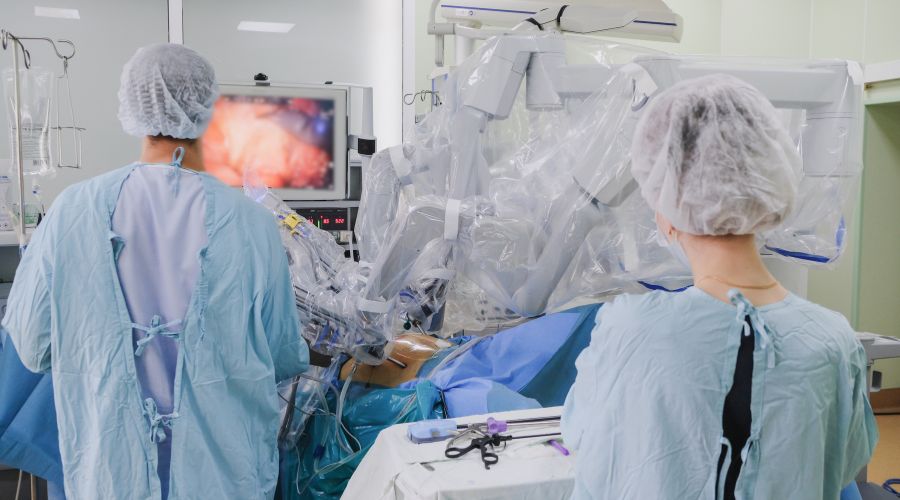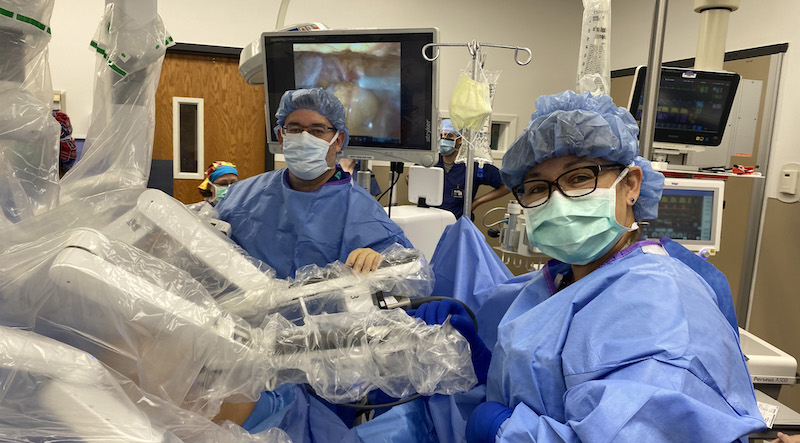Today, technology has blossomed to where minimally invasive surgeries can be performed with the assistance of a robot. This robotic technology was introduced over a decade ago with many skeptics. However, today, most general surgeons are either performing surgeries robotically or are considering doing so in the future. The reason for this is that the robot addresses many of the common pitfalls of laparoscopic surgery. However, before we get into the benefits of robotic surgery and how it has changed the surgical landscape, it is important to understand that the robot does not perform surgery by itself. It could rather be considered a drone. A pilot – your surgeon – is always in charge and the robotic arms do only what the surgeon tells them. However, the robotic technology has many significant benefits including
Better visualization: A 3D camera is used within the abdomen to show Dr. Higa a 3-dimensional view of the surgical field. This view is magnified to show detail that would not be possible on a regular 2D laparoscopic screen. The view is nothing short of immersive and allows Dr. Higa excellent visualization of the surgical field.
Dexterity: The dexterity of the robot is unmatched as well. At the end of each of the robotic arms is an articulating tip. This allows the device is to rotate 360 degrees within the abdomen. Just like a human wrist, these devices have incredible dexterity within the patient period of course, the big difference is that this is all done through a 5 millimeter incision in the stomach versus the long incision of old.
Ergonomics: The ergonomics of the surgical robot are also unparalleled. In laparoscopic surgery, Dr. Higa is standing next to the patient holding straight-handled laparoscopic devices and looking up at a screen. The robotic surgical console, on the other hand, is placed a few feet from the operating table and Dr. Higa is comfortably seated at the console from which he can control the robotic arms and view the inside of the abdomen.



